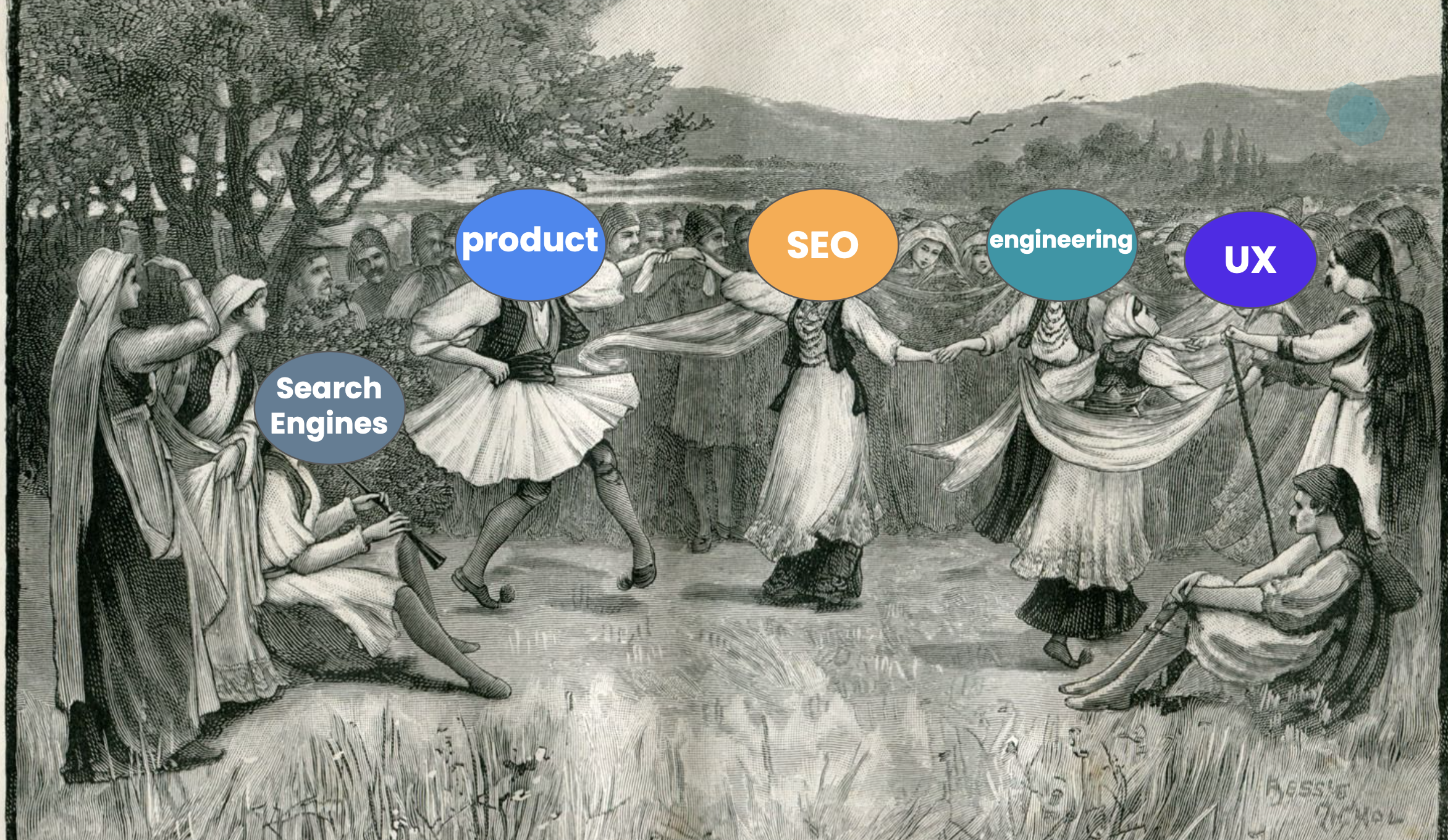Trying to establish a more consistent SEO structure within your organization?
Wish every SEO fire had a more standardized, easy-to-follow solution?
We know – no two days in SEO are the same.
However, finding a consistent approach that provides meaningful impact is surprisingly easy.
And – it works whether you’re in-house, an agency, or a freelance consultant.
On March 23, I moderated a sponsored webinar presented by Jamie Indigo and Michelle Race from Deepcrawl.
In describing SEO as a dance, they provided a four-step process for handling challenges head-on as they arise and preventing SEO fires before they start.
Here is a summary of the webinar.
To access the entire presentation, complete the form.
Step 1: Get More Visibility On Your SEO Issues
We cannot fix what we cannot see, so it’s vital to ask some fundamental questions when approaching SEO problems:
- What am I looking at?
- Where am I looking?
- How can I see something?
To dig deeper, you also need specific criteria and questions to ask yourself:
- Does expected site behavior match real-life behavior?
[Discover the tool that gives you visibility into behaviors] Instantly access the webinar →
- Are there new data sources available?
- Have you leveraged all URL prefix variants?
- Is some critical information is only available in a prefix or domain property?
- Can I look at data sources in new ways?
- Is there new data available in old favorites?
- Can I combine datasheets for enhanced insights?
Step 2: Start Diagnosing
Once you see the problem, you can now measure it.
To be a great partner of the dev team and other stakeholders in the dance of SEO, you’ll need to consider these:
- Don’t start on the wrong foot: Avoid only sending issue headings and exports of affected URLs.
- Learn the steps: Thoroughly investigate, identify, and understand each step to resolve.
- Make sure your partner knows the moves: Use various tools to diagnose, replicate, and demonstrate issues.
[Discover the best tools for great teamwork] Instantly access the webinar →
When you’re presenting the problem to other team members, be sure to mention these other factors and questions to consider when you’re diagnosing SEO:
- Know what causes the problem?
- What is being observed?
- Can it be measured?
- Are specific templates affected?
- Is there consistent behavior?
- Do all sections of the site behave the same?
- Have you tried using Chrome DevTools to locate the issue?
[How to use DevTools to find the exact code causing the problem] Instantly access the webinar →
- What does Pagespeed Insights report?
- Can you provide information from Console URL Inspector?
- What data does Deepcrawl Analyze provide?
Step 3: Master Iteration
Now that you’ve learned the steps, here are some factors and questions to look at to adequately demonstrate to your partner:
- Where do I look to see the issue? (data source)
- What is the element?
- How is it measured?
- How does it break? (Repo steps)
- How do you help the team understand?
- Know who to assign and alert.
- Execute best practices when creating a ticket.
[See the importance of breaking tickets into actionable items] Instantly access the webinar →
- Create user stories.
- Demonstrate how to reproduce.
- Add acceptance criteria.
- Provide testing strategies.
- Provide environment: UAT.
- Provide all device/platform information.
- Visual repo steps.
- Acceptance criteria.
- List out what is required.
- Provide conditional criteria if needed.
- Provide developer resources.
- List out how to test if successful.
- Provide testing URLs.
How to keep your SEO rehearsals focused:
- Constantly refine and improve.
- Stay updated with ticket progress.
- Understand the development cycle.
- Record when fixes are rolled out.
[Overcome SEO challenges] Instantly access the webinar →
Step 4: Monitor Your SEO Effectively
To glide effortlessly on the SEO stage, you’ll need to know how to monitor by answering these questions:
- What should be monitored?
- What has changed?
- How do you stay aware of new issues?
- How do you create regular crawls?
- Are you able to monitor multiple projects?
- How do you set up log monitoring?
- How should you report on search console coverage?
- How do you monitor CrUX data over time?
[Dig deeper into monitoring] Instantly access the webinar →
Moving your company towards an effective SEO project management process doesn’t require a complex dance.
 Deepcrawl, March 2022
Deepcrawl, March 2022With this simple framework, you can now deal with all types of SEO challenges, which pivots between engineering and UX, between product and the whim of search engines.
[Slides] 4-Step SEO Waltz: Tackle SEO Challenges Head-On
Here’s the presentation:
4-Step SEO Waltz: Tackle SEO Challenges Head-On from Search Engine Journal
Join Us For Our Next Webinar!
Google Algorithm Updates & Local SEO: 6 Top Tips From Experts
Want those future customers to see your business in their Google search?
Discover what Google looks for when ranking a business in our next webinar on April 6 at 2 p.m. ET.
Image Credits
Featured Image: Paulo Bobita/Search Engine Journal
!function(f,b,e,v,n,t,s) {if(f.fbq)return;n=f.fbq=function(){n.callMethod? n.callMethod.apply(n,arguments):n.queue.push(arguments)}; if(!f._fbq)f._fbq=n;n.push=n;n.loaded=!0;n.version='2.0'; n.queue=[];t=b.createElement(e);t.async=!0; t.src=v;s=b.getElementsByTagName(e)[0]; s.parentNode.insertBefore(t,s)}(window,document,'script', 'https://connect.facebook.net/en_US/fbevents.js');
if( typeof sopp !== "undefined" && sopp === 'yes' ){ fbq('dataProcessingOptions', ['LDU'], 1, 1000); }else{ fbq('dataProcessingOptions', []); }
fbq('init', '1321385257908563');
fbq('track', 'PageView');
fbq('trackSingle', '1321385257908563', 'ViewContent', { content_name: 'steps-tackle-seo-challenges-recap', content_category: 'seo webinar ' });

